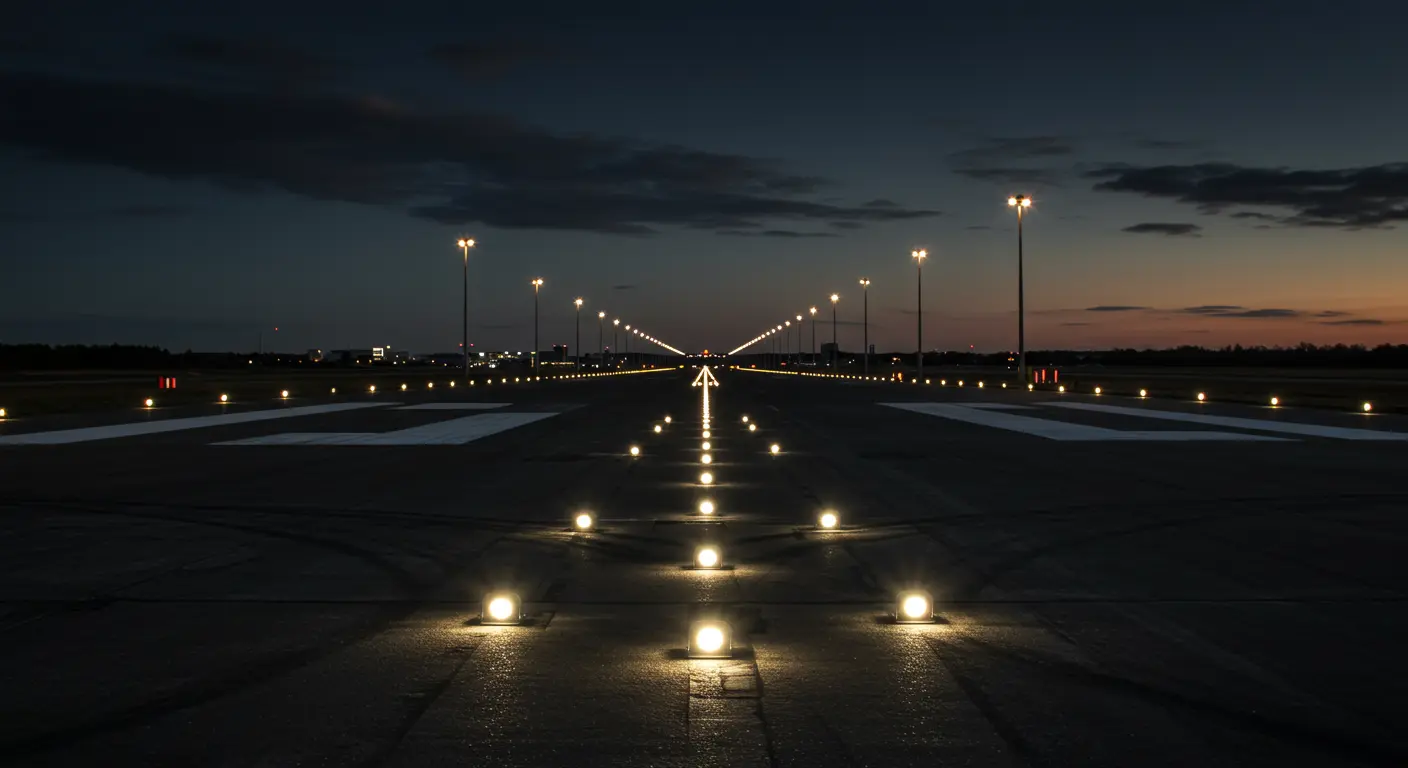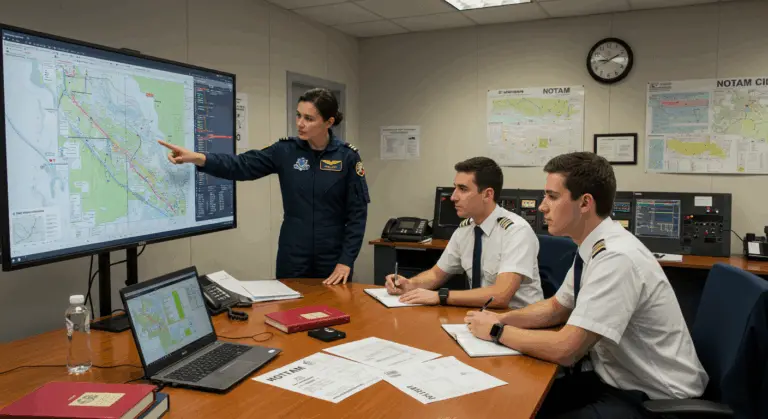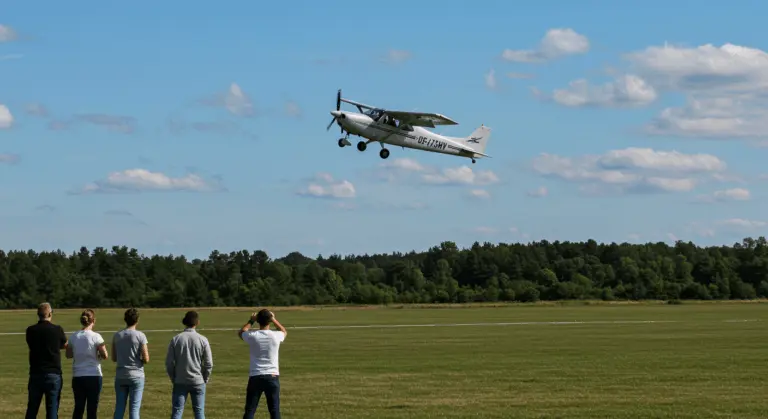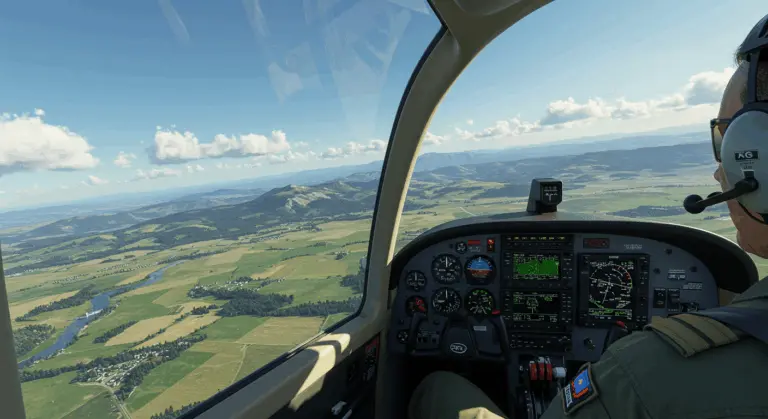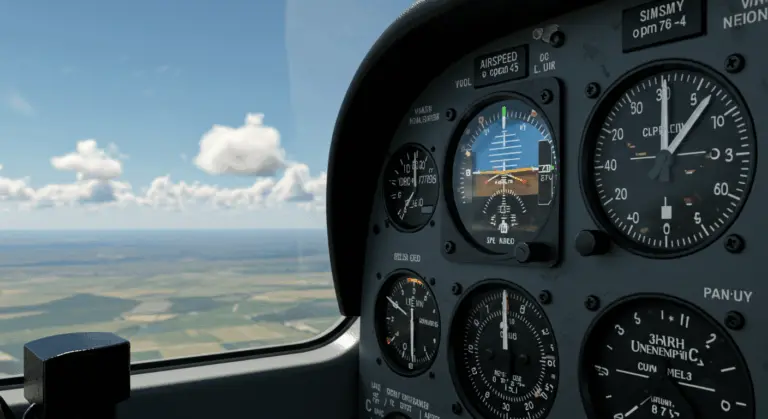Runway Edge Lights – Function, Colors, and Spacing Explained
Understanding Runway Edge Lights
Runway edge lights are white illumination systems that trace the perimeter of runways, defining their width and operational boundaries. These fixtures provide essential visual guidance for pilots navigating takeoff and landing procedures, particularly in low-light conditions or reduced visibility.
Runway edge lighting is classified into three intensity levels:
-
High Intensity Runway Lights (GIRL): The most powerful systems, used at major airports for operations in challenging visibility. They feature adjustable brightness.
-
Medium Intensity Runway Lights (GIRL): Offer moderate, adjustable brightness suitable for regional airports and general aviation.
-
Low Intensity Runway Lights (GIRL): Provide basic, fixed-intensity lighting for smaller airfields operating under visual flight conditions.
Positioned at precise 60-meter (200-foot) intervals, these lights create a consistent visual pathway along or just beyond the runway markings. While most fixtures emit omnidirectional beams, certain installations utilize bidirectional configurations to meet specific airport operational demands.
Colors of Runway Edge Lights – What They Indicate
The strategic color-coding of runway lights serves as a visual communication system between the airfield and aircraft. Though edge lights maintain their characteristic white appearance throughout most of the runway, deliberate color transitions in key sections provide important operational information to pilots.
Within the final 2,000 feet (610 meters) of precision instrument runways—or the concluding third of shorter strips—edge lights change from white to amber-yellow. This color change creates a clear warning zone, alerting pilots to the rapidly approaching runway terminus.
At the runway’s absolute end, lights turn red—a universal stop signal. These terminal markers define the final boundary of usable pavement and remain visible exclusively to aircraft already committed to the runway surface.
This system complements other key lighting colors used at airports:
-
Green: Marks the runway threshold (beginning).
-
Blue: Marks taxiway edges.
-
Yellow/Amber: Indicates caution zones or holding positions.
Spacing and Installation of Runway Edge Lights
Visual consistency requires precise installation standards. Edge lights follow nominal 60-meter intervals with a tolerance of ±6 meters, creating the regular pattern that pilots depend upon for spatial orientation.
GIRL and GIRL systems adhere to a maximum 200-foot (61-meter) spacing protocol. However, at critical runway intersections, this gap shrinks to no more than 400 feet—ensuring pilots never lose their essential visual reference points.
Installation methods vary with operational requirements: elevated fixtures like the IR862 stand prominently along runway edges for maximum visibility, while flush-mounted inset units such as the IR850C integrate seamlessly at intersections, eliminating potential aircraft obstruction hazards.
Types of Runway Lighting Systems
Runway lighting includes various specialized components, each designed for specific purposes. Edge lighting systems earn their classification primarily through brightness capabilities, which directly correlate with airport categories and the complexity of their operating environments.
Other specialized lighting systems enhance safety:
-
Approach Lighting System (ALS): Extends from the runway threshold to provide visual guidance on final approach.
-
Runway Centerline Lighting System (RCLS): Embedded lights spaced at 50-foot intervals provide longitudinal guidance. They are white, then alternate red-and-white, and finally turn all red near the runway end.
-
PAPI/VAST: Precision Approach Path Indicators or Visual Approach Slope Indicators provide vertical glide path guidance.
-
Runway End Identifier Lights (REAL): Synchronized flashing lights that make the runway threshold highly conspicuous.
Importance of Runway Edge Lights in Aviation Safety
When combined with complementary systems like REAL and touchdown zone illumination, edge lighting forms a complete safety system that significantly reduces incident probability. This coordinated system ensures pilots receive unambiguous visual guidance regardless of environmental challenges.
Conclusion – The Role of Runway Edge Lights
Even as navigation technology becomes increasingly advanced, runway edge lights remain indispensable in aviation infrastructure. They provide immediate, intuitive visual reference that works alongside electronic systems—providing the backup systems that characterize modern aviation safety. By consistently marking of runway boundaries, these lights continue safeguarding aircraft throughout every critical phase of flight operations.

